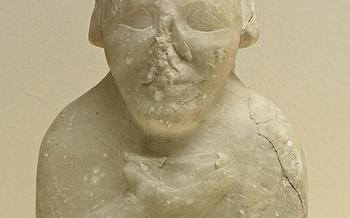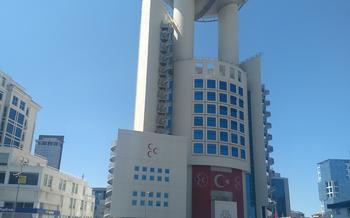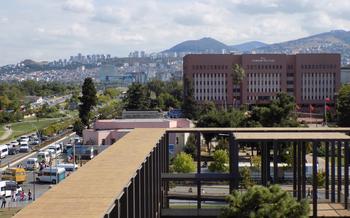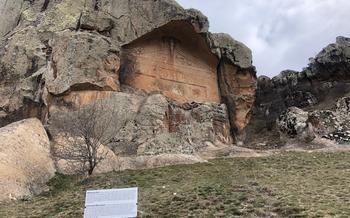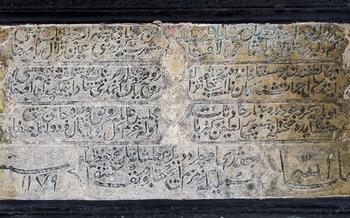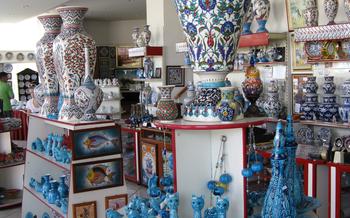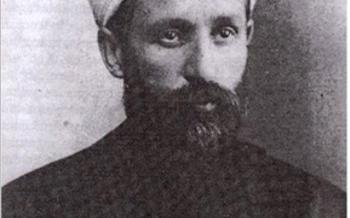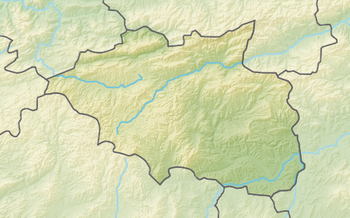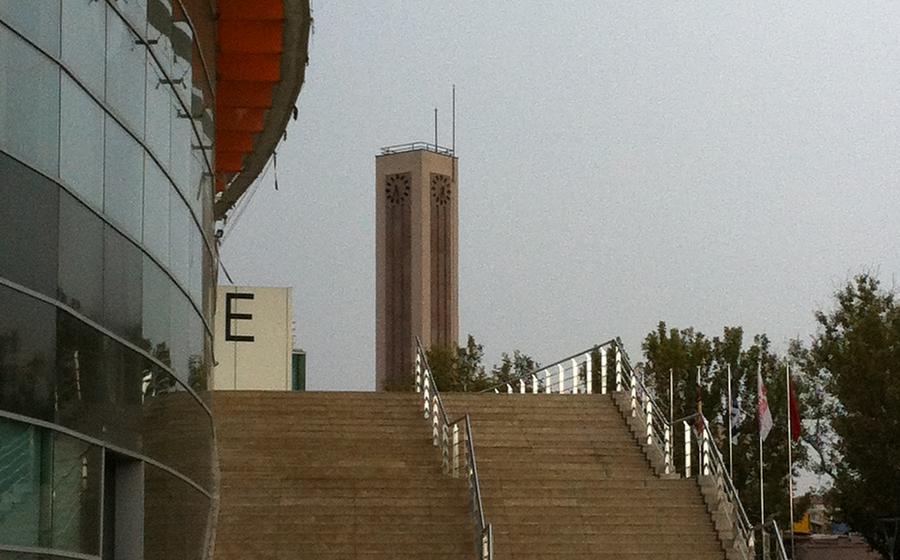
Gordion Ancient City
- A Journey to Ancient Gordion: Unveiling the Mysteries of Phrygia
- Exploring the Gordion Archaeological Museum: A Treasure Trove of Ancient Artifacts
- Step into the Past: A Walk Through the Ancient City of Gordion
- Unraveling the Secrets of the Phrygian Tumuli: A Legacy of Royal Burials
- Witnessing the Masterpiece: The Gordion Knot Mosaic in All Its Glory
- Shopping for Souvenirs: Preserving Memories of Gordion's Treasures
- Transportation Tips: Navigating Your Way to Gordion
- Accommodation Options: Finding Your Home Away from Home in Gordion
- Exploring the Region: Unveiling the Hidden Gems Around Gordion
- History Buffs' Paradise: Delving Deeper into Gordion's Past
- Capturing the Essence: Photography Tips for Gordion's Landscapes and Ruins
- Family-Friendly Adventures: Engaging Kids with Gordion's History
- Accessibility Considerations: Ensuring an Inclusive Experience for All
- Insider Tip: Unearthing Hidden Gems
A Journey to Ancient Gordion: Unveiling the Mysteries of Phrygia
In the heart of Turkey, where history unfolds, lies the ancient city of Gordion, a testament to the grandeur of the Phrygian civilization. This enigmatic city, once the capital of Phrygia, holds a captivating story that has intrigued historians, archaeologists, and travelers alike. Its strategic location along the trade routes of Anatolia made it a significant center of commerce and culture, leaving behind a rich legacy that continues to inspire and fascinate.
Gordion's history is intertwined with intriguing legends and myths that add to its allure. One of the most famous tales is associated with the legendary King Midas, known for his golden touch. According to legend, Midas visited the Oracle of Delphi and was told that he would become the richest man in the world. However, his greed led him to ask for the power to turn everything he touched into gold, which ultimately became his undoing.
Archaeological excavations at Gordion have unearthed a wealth of artifacts and ruins that shed light on the city's vibrant past. The discovery of the Gordion Knot, a complex knot carved into a stone block, has become an iconic symbol of the site. Intriguing questions surround the knot, with some believing it was a royal seal, while others suggest it may have had religious significance.
Planning a visit to Gordion is a journey into the depths of history. The Gordion Archaeological Museum, located near the ancient city, is a treasure trove of artifacts unearthed from the site. Immerse yourself in the Phrygian civilization as you explore the museum's collection, unraveling the secrets of this ancient kingdom.
Exploring the Gordion Archaeological Museum: A Treasure Trove of Ancient Artifacts
The Gordion Archaeological Museum stands as a testament to the rich history and cultural heritage of the ancient Phrygian civilization. Step inside its doors, and you'll be greeted by a treasure trove of artifacts that tell the story of a people who once thrived in this land.
Among the highlights of the museum's collection is the iconic Gordion Knot mosaic, a masterpiece of ancient art that has captivated visitors for generations. This intricate mosaic depicts the legendary knot that Alexander the Great famously attempted to cut with his sword. Its intricate design and vibrant colors are a testament to the skill and artistry of the Phrygian craftsmen.
Beyond the Gordion Knot, the museum houses a vast collection of artifacts that provide insights into the daily lives, customs, and beliefs of the Phrygians. From delicate jewelry and pottery to impressive sculptures and architectural fragments, each piece offers a glimpse into the vibrant world of this ancient civilization.
The museum's layout is designed to guide visitors through the history and culture of Gordion in a chronological order. Interactive displays and informative panels complement the artifacts, providing context and helping visitors understand their significance.
A visit to the Gordion Archaeological Museum is an essential part of any journey to this ancient city. It's a place where history comes alive, and the echoes of the past can still be heard in the whispers of the artifacts.
Step into the Past: A Walk Through the Ancient City of Gordion
Strolling through the ancient city of Gordion is like stepping into a living history book. The well-preserved ruins, including the impressive city walls, transport you back to a time when Phrygia was a powerful kingdom. Explore the remains of temples, palaces, and other significant structures, each telling a story of the city's rich past. Imagine the bustling streets, the lively markets, and the daily activities of Gordion's inhabitants as you wander through this archaeological wonderland. Capture stunning photographs of the ruins, and let your imagination soar as you envision life in this ancient metropolis.
Unraveling the Secrets of the Phrygian Tumuli: A Legacy of Royal Burials
The Phrygian tumuli, majestic mounds scattered across the Gordion landscape, stand as testaments to the region's rich history and cultural heritage. These monumental structures, meticulously crafted from earth and stone, served as final resting places for Phrygian royalty and elites, embodying their power and prestige.
Among the most notable tumuli is the renowned Midas Mound, named after the legendary King Midas. Excavations conducted at this site have unearthed a wealth of treasures, including exquisite gold and silver artifacts, offering glimpses into the opulence and artistry of the Phrygian civilization. The tumulus itself, with its imposing size and meticulously engineered construction, speaks volumes about the advanced engineering skills of the Phrygians.
As you explore the tumuli, you'll gain insights into the elaborate burial practices of the Phrygian people. Their reverence for the afterlife is evident in the carefully placed grave goods, often comprising personal belongings, jewelry, and ceremonial objects, intended to accompany the deceased on their journey into the next realm.
While some tumuli have been extensively excavated, others remain largely untouched, their secrets yet to be revealed. This adds an air of mystery and intrigue to your exploration, inviting you to ponder the stories and treasures that lie hidden beneath the earth's surface.
To fully appreciate the significance of the Phrygian tumuli, it's essential to respect the historical and cultural importance of these sites. As you navigate the ancient landscape, tread with care and follow designated paths to avoid disturbing the fragile remains. This way, we can ensure that these remarkable monuments remain preserved for generations to come.
Witnessing the Masterpiece: The Gordion Knot Mosaic in All Its Glory
Amidst the treasures of the Gordion Archaeological Museum, one masterpiece stands out, captivating visitors with its intricate design and historical significance: the Gordion Knot Mosaic. Created in the 2nd century BC, this exquisite artwork depicts a scene from Greek mythology involving Alexander the Great and the legendary Gordian Knot.
The mosaic portrays Alexander, adorned in royal attire, attempting to untangle the knot with his sword. According to legend, whoever could untie the knot was destined to rule over all of Asia. Alexander, unable to untangle the knot, famously sliced it in half with his sword, fulfilling the prophecy and securing his place in history.
The mosaic's intricate details and vibrant colors bring this ancient tale to life. The expressions on Alexander's face and the surrounding figures convey a sense of drama and anticipation. The knot itself, with its complex interweaving lines, symbolizes the challenges and complexities of leadership and the unyielding determination required to overcome them.
As you stand before this masterpiece, let your imagination transport you back to ancient Gordion, where Alexander's legendary encounter with the Gordian Knot took place. Reflect on the enduring legacy of this mosaic, which has become an iconic symbol of Gordion's rich history and cultural heritage.
To capture the essence of this masterpiece, consider visiting the Gordion Archaeological Museum during the morning or late afternoon, when the natural light illuminates the mosaic's colors and intricate details. Remember to follow the museum's guidelines and regulations regarding photography to ensure the preservation of this precious artifact.
Shopping for Souvenirs: Preserving Memories of Gordion's Treasures
Strolling through the vibrant markets or cozy shops near the Gordion site, you'll uncover a treasure trove of unique souvenirs and handicrafts inspired by the region's rich history and culture. These mementos serve as tangible reminders of your journey through time and offer a glimpse into the lives of ancient Phrygians.
From intricate pottery adorned with traditional motifs to handwoven textiles showcasing vibrant colors, each souvenir tells a story of Gordion's past. You can also find replicas of the iconic Gordion Knot mosaic, crafted with meticulous attention to detail, or jewelry pieces inspired by Phrygian designs.
To ensure you're supporting local artisans and preserving cultural heritage, opt for authentic and high-quality souvenirs. Engage in friendly bargaining, a customary practice in Turkish markets, but always do so respectfully. Your purchase not only supports local businesses but also contributes to the preservation of Gordion's legacy.
Beyond material souvenirs, consider capturing the essence of Gordion through photography. Immortalize the grandeur of the ancient city, the intricate details of artifacts, and the breathtaking landscapes that surround the site. Your photographs will serve as timeless keepsakes, reminding you of the wonders you've witnessed in this historical land.
Transportation Tips: Navigating Your Way to Gordion
Visiting Gordion requires careful planning, especially when it comes to transportation. If you're flying into Turkey, the closest major airport is in Ankara, the capital city. From there, you can take a bus or rent a car to reach Gordion, which is approximately 90 kilometers away. Buses depart from Ankara's main bus station, AŞTİ, and the journey takes around two hours.
Renting a car offers more flexibility and allows you to explore the surrounding region at your own pace. Several car rental companies operate at Ankara Airport, and you can easily book a vehicle online or through your preferred travel agent. Keep in mind that driving in Turkey can be challenging, especially in busy cities like Ankara. However, once you're on the open road, the drive to Gordion is relatively straightforward.
If you're already in Turkey, you can take a train from Ankara to Polatlı, the closest town to Gordion. The train journey takes about an hour and a half, and from Polatlı, you can take a taxi or bus to Gordion, which is just a short distance away.
No matter which transportation option you choose, make sure to plan your journey in advance, especially if you're traveling during peak tourist season. It's also a good idea to have a map or GPS device handy, as road signs in Turkey can be limited.
Accommodation Options: Finding Your Home Away from Home in Gordion
When planning your visit to Gordion, finding comfortable and convenient accommodation is essential. Fortunately, there are several options available to suit different preferences and budgets.
For those seeking a comfortable stay, the Gordion Museum Hotel offers a range of modern amenities and facilities. Located near the Gordion Archaeological Museum, this hotel provides easy access to the ancient city and other attractions.
Alternatively, several guesthouses and pensions in the nearby town of Polatlı offer a more budget-friendly option. These guesthouses often provide a more intimate and authentic experience, allowing visitors to interact with local families and learn about their way of life.
For a truly immersive experience, consider staying in a traditional Turkish village house or a restored Ottoman mansion. These accommodations offer a unique opportunity to connect with the region's history and culture while enjoying the comforts of modern amenities.
Remember to book your accommodation in advance, especially during the peak tourist season, to avoid any last-minute disappointments. Supporting local businesses by choosing locally owned hotels or guesthouses contributes to the community's economic development and preserves the region's cultural heritage.
Exploring the Region: Unveiling the Hidden Gems Around Gordion
Gordion is not just an isolated site; it is nestled within a region rich in historical and cultural significance. The Phrygian Valley, where Gordion is located, offers a treasure trove of hidden gems waiting to be discovered.
A short drive from Gordion lies the ancient city of Midas City, believed to be the summer residence of King Midas. Explore its well-preserved ruins, including a monumental gate, temple, and royal palace, and immerse yourself in the grandeur of Phrygian architecture.
Venture further into the valley to discover the ancient city of Pessinus, renowned for its temple dedicated to the mother goddess Cybele. Marvel at the impressive ruins of this religious center, which once attracted pilgrims from across the ancient world.
Don't miss the opportunity to visit the Phrygian Rock Monuments, a series of fascinating rock-cut sanctuaries and reliefs scattered throughout the valley. These enigmatic carvings offer a glimpse into the religious beliefs and artistic traditions of the Phrygian people.
For a truly immersive experience, consider embarking on a multi-day hiking or cycling tour through the Phrygian Valley. Explore the scenic countryside, encounter local villagers, and discover hidden ruins and natural wonders along the way.
Combining a visit to Gordion with other destinations in Turkey allows you to create a comprehensive and enriching travel itinerary. From the bustling city of Ankara to the natural beauty of Cappadocia, Turkey offers a wealth of experiences for every traveler.
History Buffs' Paradise: Delving Deeper into Gordion's Past
For those captivated by history, Gordion offers a treasure trove of opportunities to delve deeper into its rich past. Start by immersing yourself in the written works of renowned scholars and archaeologists who have dedicated their lives to studying Gordion. Their books, articles, and research papers provide invaluable insights into the city's history, culture, and significance.
Documentaries and online resources offer a visual journey through Gordion's past. Explore the excavations, discover the artifacts, and witness the painstaking work of archaeologists as they piece together the puzzle of this ancient city. These resources bring Gordion's history to life, allowing you to experience the thrill of discovery from the comfort of your home.
Take your passion for history a step further by volunteering or participating in archaeological research at the Gordion site. Join a team of experts as they uncover new secrets, restore artifacts, and contribute to our understanding of this ancient civilization. Volunteering not only provides hands-on experience but also offers a unique opportunity to be part of the ongoing legacy of Gordion's exploration.
Preserving and protecting Gordion's cultural heritage is crucial for future generations. Support organizations dedicated to the conservation and restoration of the site. Consider making a donation or becoming a member to contribute to the preservation of this invaluable historical treasure. By doing so, you play a vital role in ensuring that Gordion's legacy continues to inspire and educate for years to come.
Capturing the Essence: Photography Tips for Gordion's Landscapes and Ruins
The ancient city of Gordion, with its majestic ruins and sprawling landscapes, presents a photographer's paradise. To capture the essence of this historical site, consider the following tips:
-
Golden Hour Magic: Aim to visit Gordion during the golden hours, shortly after sunrise or before sunset. The warm, diffused light during these times casts a magical glow on the ruins, enhancing their grandeur and creating stunning photographic opportunities.
-
Composition and Perspective: Experiment with different angles and perspectives to create dynamic compositions. Capture the scale of the ancient city by incorporating the surrounding landscape, or focus on intricate details like the stone carvings and mosaics.
-
Capturing the Details: Don't forget to zoom in and focus on the details that make Gordion unique. Close-up shots of the intricate carvings, pottery shards, and architectural elements can reveal hidden stories and bring the past to life.
-
Respecting the Site: Always adhere to the site's regulations regarding photography. Use a tripod when necessary to avoid damaging the delicate ruins, and be mindful of other visitors.
-
Storytelling Through Images: Use your photographs to tell a story about Gordion's history and significance. Capture the emotions and experiences of your visit, and share them with others to inspire their own journey to this ancient land.
Family-Friendly Adventures: Engaging Kids with Gordion's History
Visiting Gordion with kids can be an enriching and educational experience. To make the most of it, consider these tips:
-
Interactive Activities: Engage kids with interactive games or activities related to Gordion's history. Create a treasure hunt with clues leading to significant landmarks, or play a game of "I spy" with ancient artifacts.
-
Storytelling: Bring Gordion's legends and myths to life by storytelling. Share the tale of King Midas and the golden touch, or narrate the story of Alexander the Great cutting the Gordion Knot.
-
Hands-On Learning: Encourage kids to get hands-on by creating their own Phrygian artifacts. They can make replicas of pottery, jewelry, or coins using clay, beads, and other materials.
-
Educational Workshops: Check if the Gordion Archaeological Museum offers educational workshops or programs for children. These workshops often provide hands-on activities and interactive learning experiences.
-
Respect the Site: Teach kids the importance of respecting the historical significance of the site. Encourage them to walk carefully, avoid touching artifacts, and follow the designated paths.
By making the visit fun, interactive, and educational, you can create lasting memories for your kids while fostering their love for history and exploration.
Accessibility Considerations: Ensuring an Inclusive Experience for All
The Gordion Archaeological Museum and the ancient city of Gordion are committed to providing an inclusive and welcoming environment for visitors of all abilities. Accessibility features and facilities have been implemented to ensure that everyone has the opportunity to explore and appreciate the site's rich history.
Wheelchair ramps and designated accessible pathways allow visitors with limited mobility to navigate the museum and the ancient city with ease. Braille signage and audio guides are available for visually impaired visitors, providing them with detailed descriptions of the exhibits and the site's layout.
For visitors with hearing impairments, assistive listening devices are available upon request. These devices amplify the audio content of guided tours and presentations, ensuring that everyone can fully participate in the educational experiences offered at Gordion.
The museum staff is trained to assist visitors with disabilities and provide any necessary accommodations. Visitors are encouraged to contact the museum in advance to inquire about specific accessibility needs or to arrange for assistance during their visit.
By embracing accessibility, the Gordion Archaeological Museum and the ancient city of Gordion are creating a welcoming and inclusive environment for all visitors, ensuring that everyone has the opportunity to discover and appreciate the wonders of this ancient Phrygian capital.
Insider Tip: Unearthing Hidden Gems
Beyond the main attractions of Gordion, there lies a hidden gem waiting to be discovered. Nestled amidst the rolling hills, just a short walk from the ancient city, you'll find a secluded spot that offers a unique perspective on Gordion's rich history. This lesser-known attraction, known as the "Secret Sanctuary," is believed to have been a sacred place of worship for the Phrygians. As you approach the site, you'll be greeted by a serene atmosphere, with the sound of birds chirping and the gentle breeze rustling through the leaves. Explore the sanctuary's well-preserved ruins, including a small temple and an altar adorned with intricate carvings. Take a moment to soak in the tranquility of this hidden gem and imagine the rituals and ceremonies that once took place here. Remember to respect the site's regulations and guidelines as you explore this off-the-beaten-path location, ensuring that its beauty and significance are preserved for generations to come.
